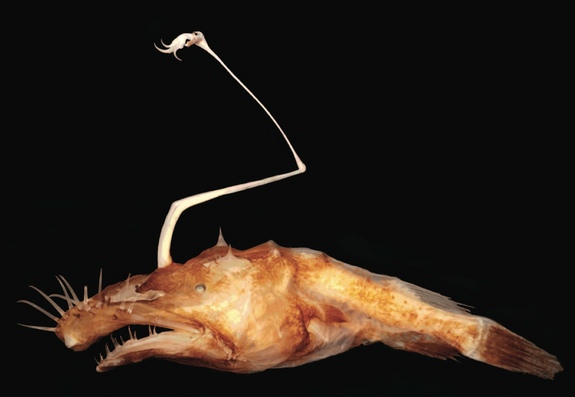New Deep-Sea Anglerfish is Something Out of Nightmares
The new fish was discovered by a researcher at the Nova Southeastern University’s (NSU) Halmos College of Natural Sciences and Oceanography at a depth of between 3,281-4,921 feet (1,000-1,500 metres). According to the Washington Post, the three specimens, which are more elongated and less round than other anglerfish, will now live at the University of Washington, where they can spend their days horrifying graduate students.
The findings have been published by The American Society of Ichthyologists and Herpetologists in Copeia, an global journal that publishes research on fish, amphibians and reptiles. You can find the full report online. Lasiognathus regan dwell almost 5,000 feet below the ocean’s surface. It is believed that this fishing pole evolved from a dorsal fin.
Anglerfish live at depths where there is absolutely no sunlight filtering through the seawater above them. The reason the anglerfish has that odd-looking appendage on its head is because it generates bioluminescence, which means it can produce its own light source.
Most of this region is still a mystery to humans, thanks to the extreme conditions and water pressure levels of more than 2,200 pounds per square inch.
The only thing “normal” about this species is the long, angular fishing pole that’s growing out of his head – a feature that is common among all species of ceratioid anglerfish, which is used to lure prey.
“This fish dangles the appendage until an unsuspecting fish swims up thinking they found a meal, only to quickly learn that they are, in fact, a meal themselves”, the researchers from Nova Southeastern University in Fort Lauderdale, Florida, said.
Finding this new scary-looking deep-sea fish reminds people that the ocean is vastly unexplored.
‘Every research trip is an adventure and another opportunity to learn about our planet and the varied creatures who call it home.’.
Dr. Sutton studies the ecology of marine systems, particularly those of the open ocean.
And they are, formally, related to the anglerfish, but it’s up to the scientists and researches to figure it out beyond that.
Dr Tracey Sutton is one of NSU’s experts on deep-sea life. He combines observational, organismal and theoretical approaches to help understand Earth’s largest, but least known ecosystems.








